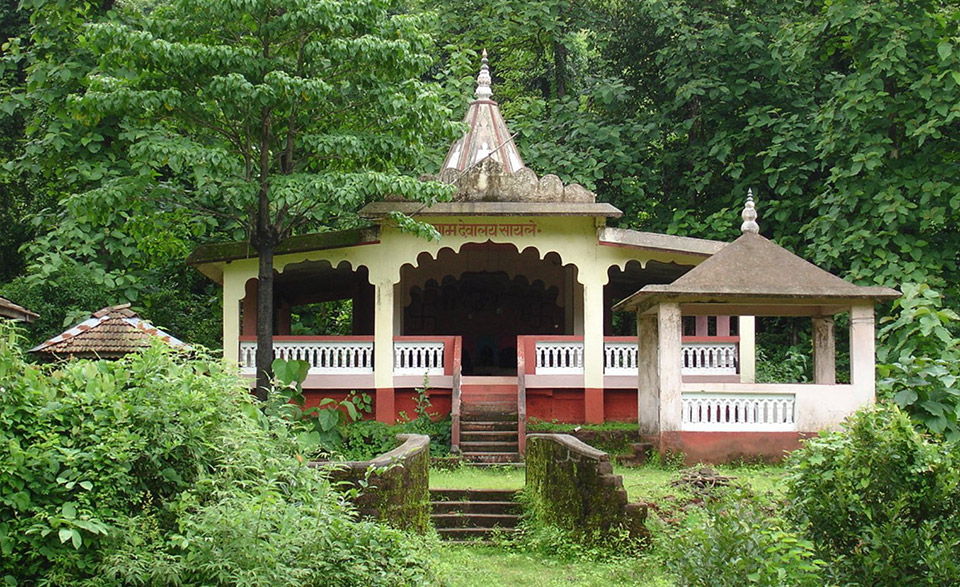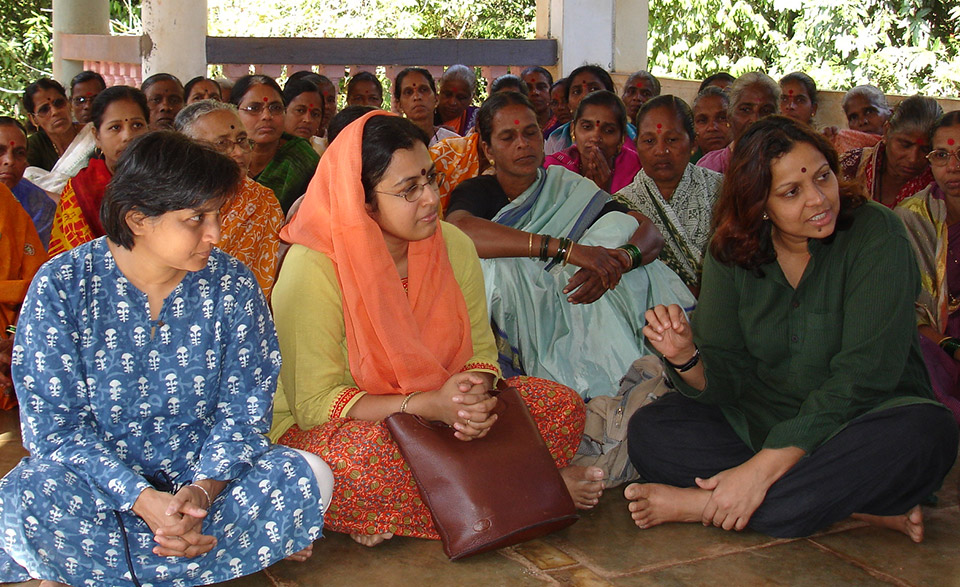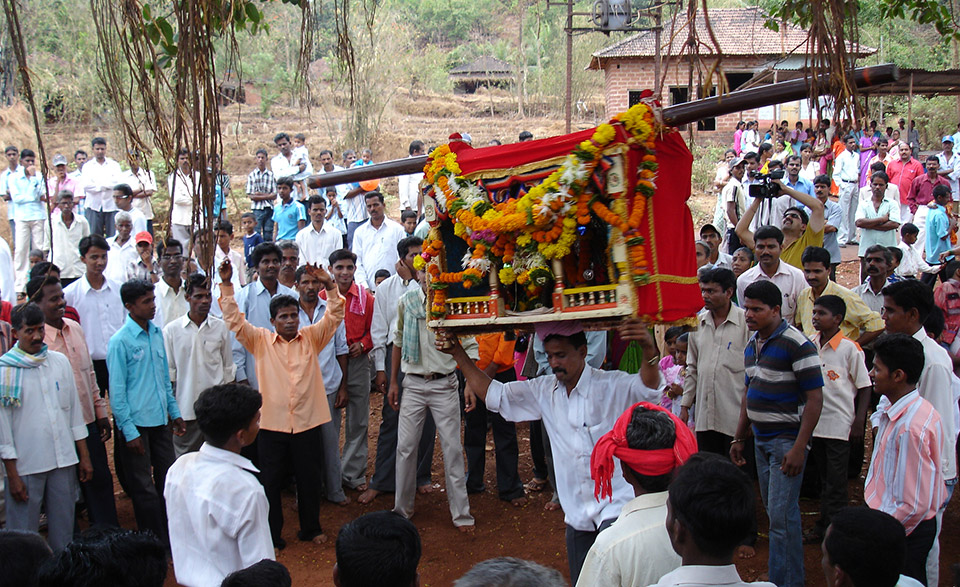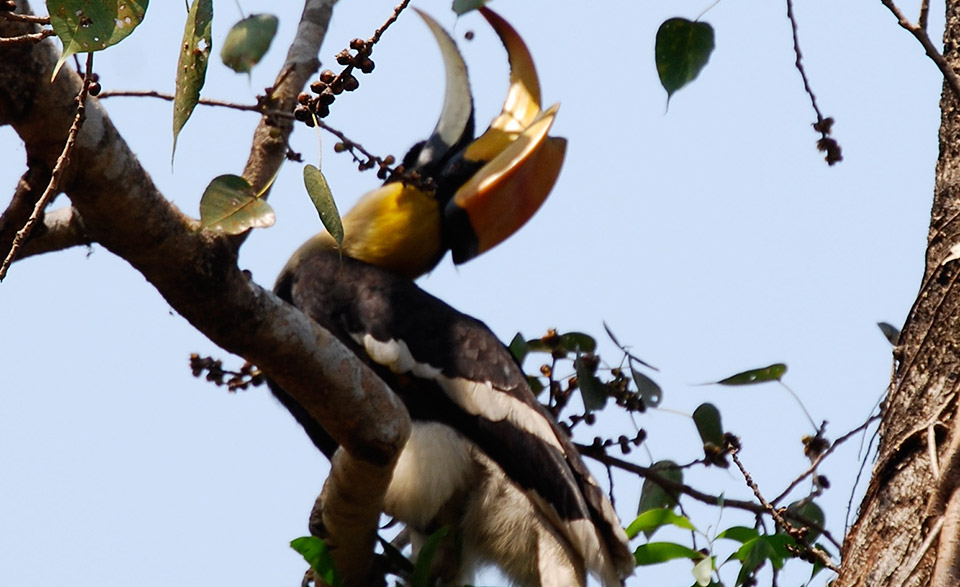Mae'r Ghats Western gogledd o India yn Maharashtra wladwriaeth yn eco-ranbarth yn ffurfio un o'r ardaloedd gwaethaf bioamrywiaeth fyd-eang. Mae bioamrywiaeth uchel y rhanbarth yn cael ei ategu gan amrywiaeth uchel mewn traddodiadau lleol yn y rhanbarth. Mae bron pob pentref yn y rhanbarth Sahaydri-Konkan o leiaf un llwyn sanctaidd gydag arwyneb yn amrywio o ychydig gannoedd o hectarau. Llwyni Sacred wedi goroesi am gannoedd lawer o flynyddoedd, a heddiw yn gweithredu fel cronfeydd bioamrywiaeth lochesu llawer o blanhigion ac anifeiliaid fel rhwydwaith glytiog o fywyd gwyllt gymharol ddigyffwrdd.
Dan Fygythiad.
Bygythiadau
Bygythiadau i llwyni cysegredig yn deillio yn bennaf o acculturation a globaleiddio. Llwyni cysegredig bach yn cael eu hystyried yn aml fel darnau bach o dibwys coedwigoedd sy'n llesteirio gwaith datblygu. Llwyni cysegredig llawer wedi cael eu dinistrio, a dim ond y temlau o waith dyn yn cael eu cadw. Mae enghreifftiau o resymau pam mae'r llwyni wedi cael eu dileu yn llechfeddiant, adeiladu ffyrdd, pori, adeiladu argaeau a chamlesi a threfoli. Penderfyniadau i newid neu ddileu llwyn penodol yn aml yn dod o'r pentrefi cyfagos lle mae dylanwadau gorllewinol mwy o achosi gwanhau o gredoau crefyddol sy'n cael ei lledaenu ledled y rhanbarth.
Gweledigaeth
Mae'r rhanbarth yn debygol o elwa o ffurf briodol o gyd-reoli y llwyni cysegredig, gan ceidwaid lleol yn ogystal â budd-ddeiliaid rhanbarthol eraill. Y ffordd fwyaf addawol o gyflawni hyn yw trwy ail-sefydlu normau diwylliannol a cheidwaid grymuso, bobl leol a chyrff llywodraethu traddodiadol. Gwaith tymor hir yn bwysig i greu cynghreiriau cadarn rhwng gwahanol bleidiau. Cefnogaeth barhaus ariannol sydd ei angen ynghyd â hwyluso cryf parhaus o'r prosesau dan sylw. Gallai'r rhain fod yn ddulliau effeithiol i basio ar y llwyni cysegredig a'u pwysigrwydd biocultural i'r cenedlaethau yn y dyfodol.
Gweithredu
AERF has worked specifically on up scaling and replication of the long-term management of sacred groves with community involvement in different villages. They have attempted to revive the traditional approaches to nature by raising locals’ awareness and by developing incentives for management. They have brought together stakeholders at both block and district levels.
Polisi a'r Gyfraith
The legal ownership of the groves is currently with the state revenue department.
The protection of sacred groves in the region cannot use the same legal system as that for forest protection because the rules for management are different. In some sacred groves, limited allowance of extraction is established for specific non timber forest products. Rules and regulations defined by the ancestors are not written down, and are sometimes twisted for short term benefits.
Ceidwaid
Traditional conservation practices such a sacred forests are an important component of the landscape in three districts of the north Western Ghats Maharashtra state. The groves are mostly owned by villagers who are still able to survive on their lands without having to develop their sacred groves. Management of the sacred grove including religious functions and protection is supervised and monitored by a group of village elders. The cultural significance is high, and most of the community festivals are celebrated in the temple situated in the sacred grove. Some of the groves also function as burial grounds and crematoriums and some are abodes of ghosts and deities. Except for water, people do not use any resources from these groves as is done in other regions in India.
Clymblaid
The Applied Environmental research Foundation (AERF) has been working on sacred groves conservation in North Western Ghats for over 15 mlynedd. In Sangameshwar block, AERF has revived the tradition of sacred groves and involved local people in planning as well as implementation for long-term conservation of the sacred groves.
Offer Cadwraeth
Co-management is one of the important starting points, facilitating mutual understanding between parties. Stakeholder sessions have been organised, making different groups enthusiastic and curious about the sacred groves. The media play an important role in building consensus and awareness about environmental issues, but they could discuss more topics on sacred groves. AERF stimulates local communities to revive their ancient traditions through participatory work. They used local traditional myths, dance, song and ceremony to develop a common understanding of villagers’ cosmovision, restoring it where needed to support the maintenance of the sacred groves. Yn ogystal, they make biodiversity inventories to reveal the gravity of the situation.
“Decisions such as seeking permission for using the sacred groves resources for the village well-being are generally taken in the temple”.
- Archana Godbole, Director of the Applied Environmental Research Foundation.
- Godbole, Sarnaik, Punde, (2010) Culture-based conservation of sacred groves: Experiences from the north Western Ghats, India, yn Verschuuren, Gwyllt, McNeely a Oviedo, Safleoedd Naturiol Sacred: Gwarchod Natur a Diwylliant, Ddaear Scan, Llundain.
- Applied Environmental Research Foundation in Pune, India: www.aerfindia.org








